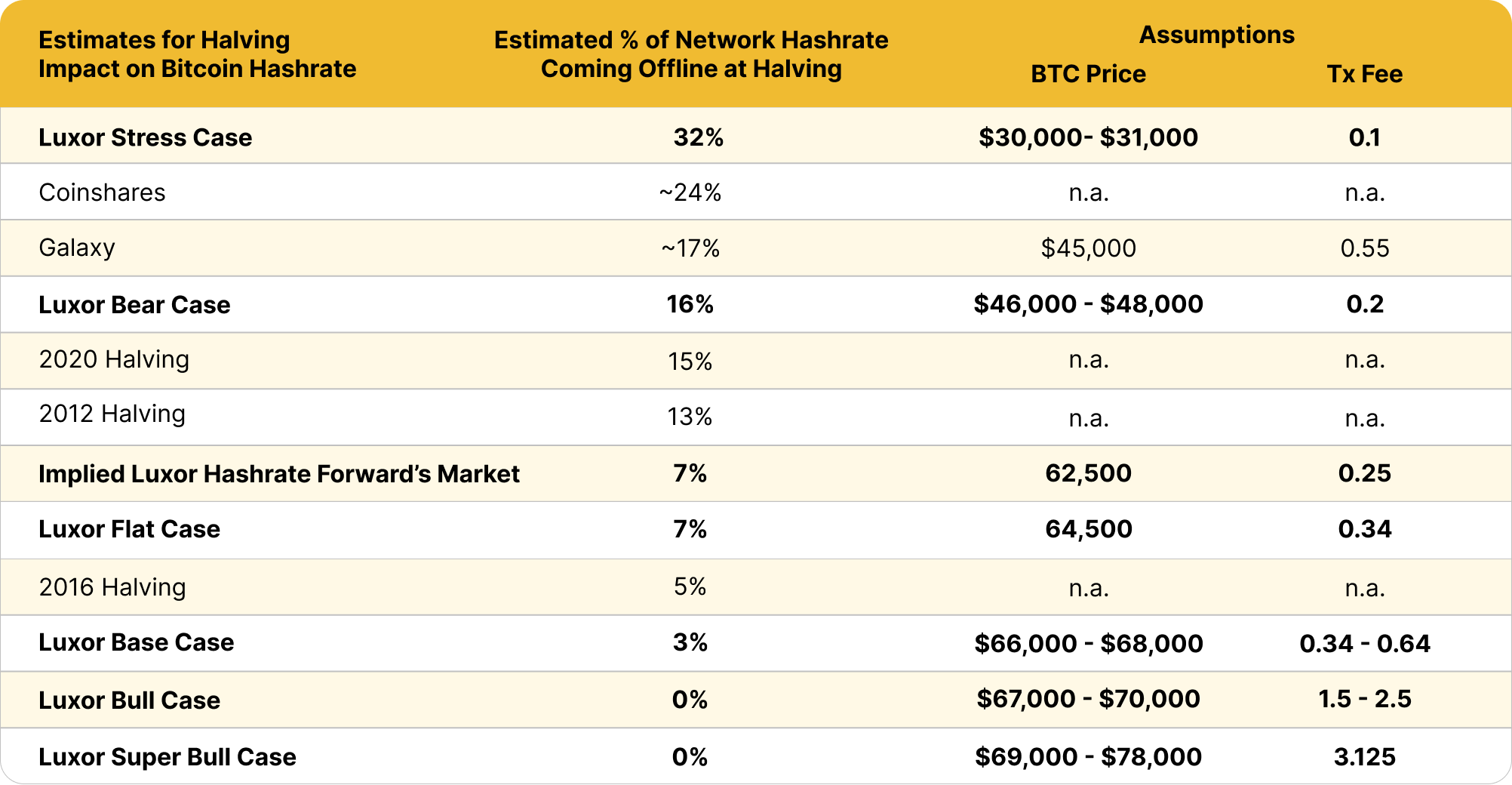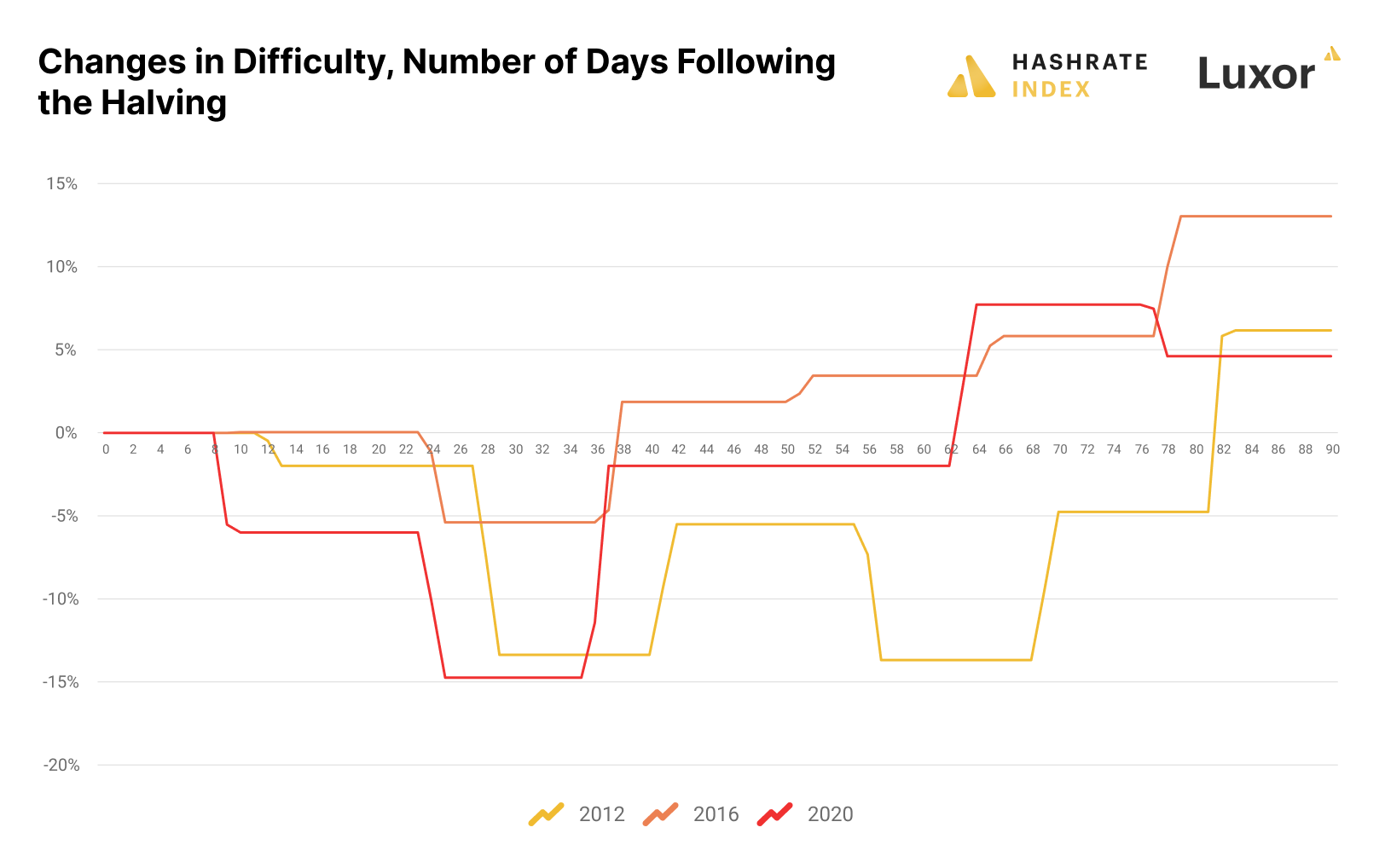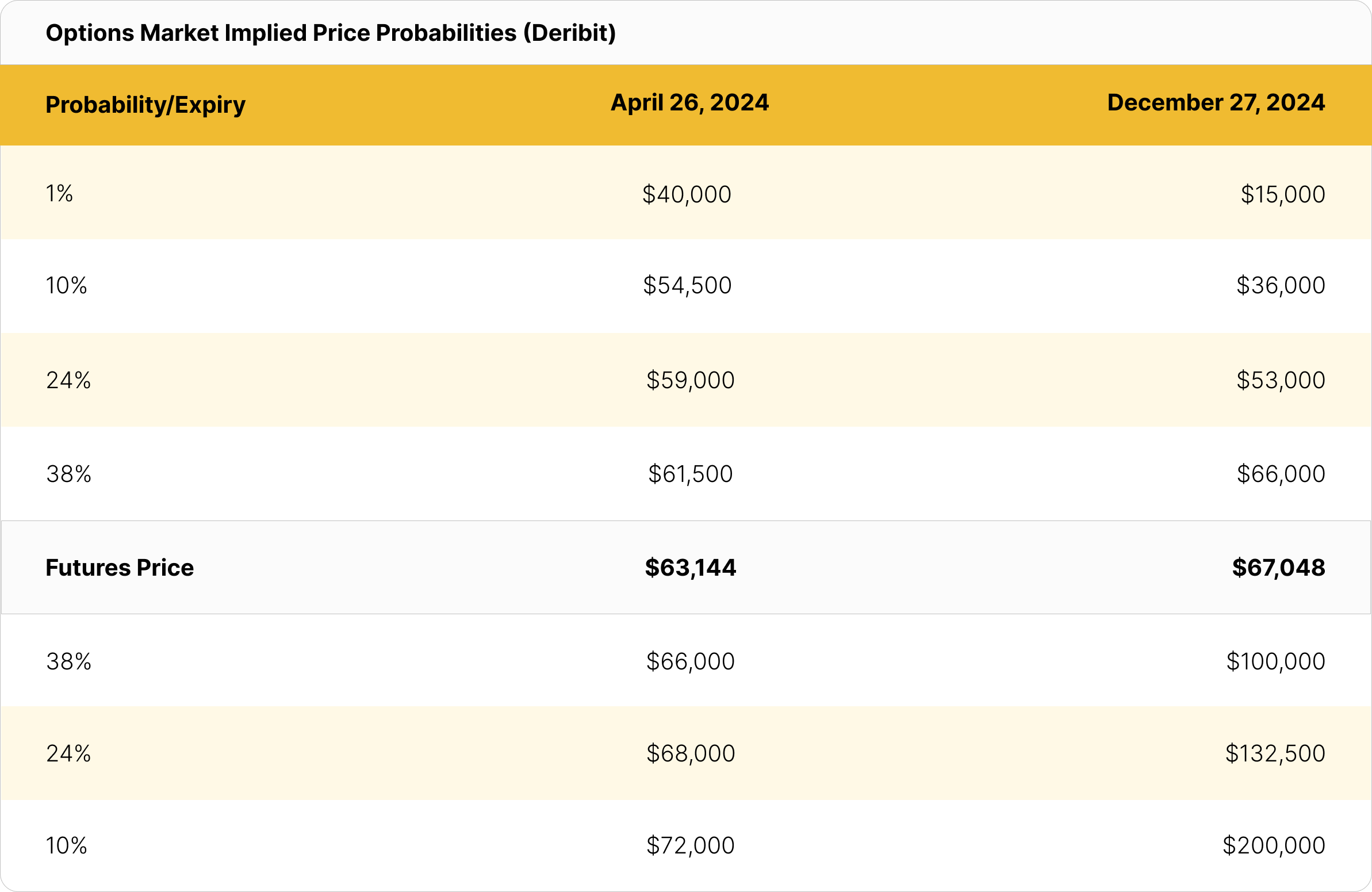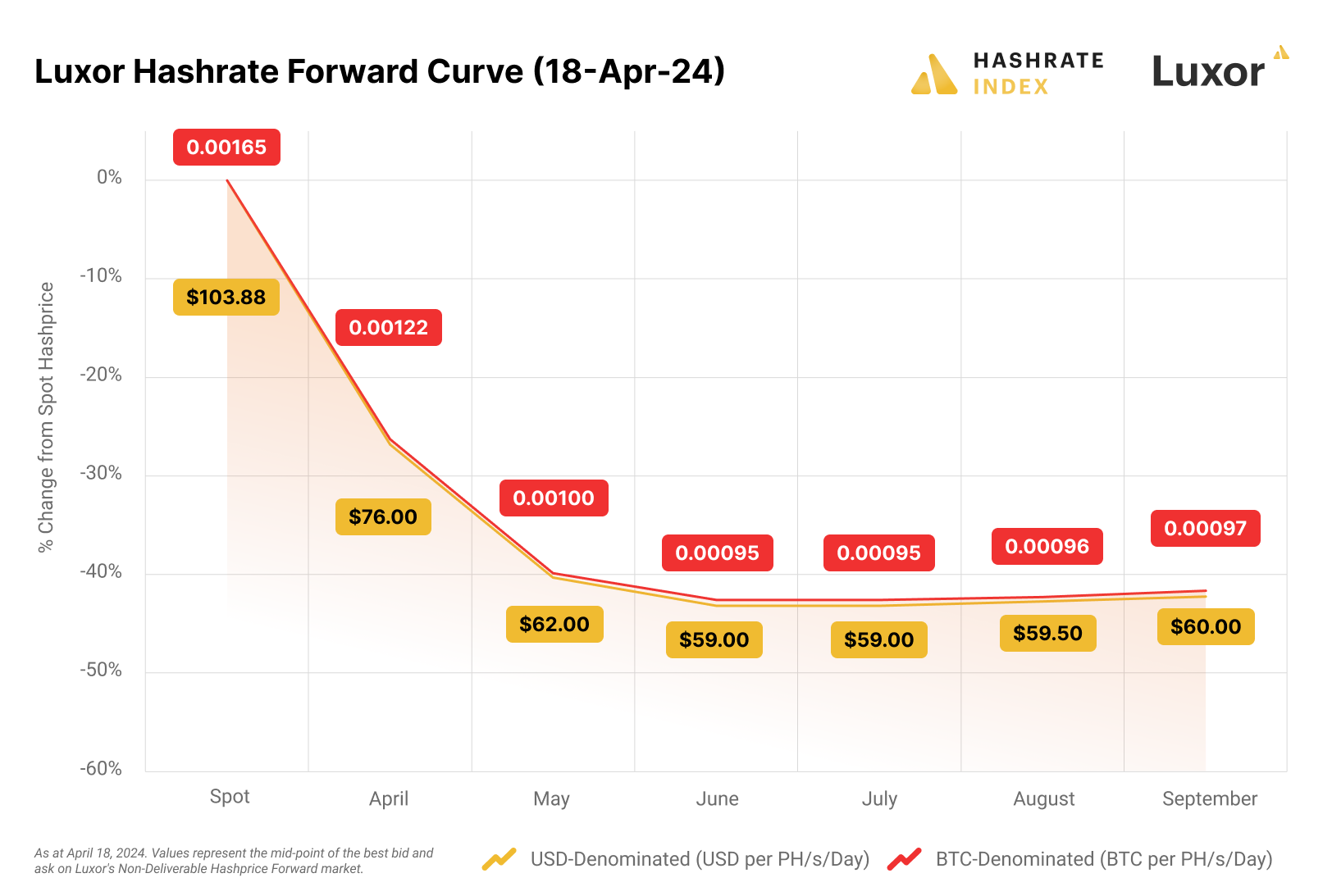Halving Hashrate Markets: What To Watch
2024 Bitcoin Halving
With Bitcoin’s fourth halving imminent, hashrate markets are about to get a lot more interesting. Here is what to keep an eye on.
Halving Timing
While the block subsidy is absolutely certain in terms of blocks, it is not certain in terms of time. Therefore, when considering forward hashrate markets (which are based on time) it is important to consider when the halving will occur to fairly judge future value on specific dates.
The table below provides a reasonable range for block times between now and the halving. During this difficulty epoch, block times are averaging just under 9 minutes and 50 seconds. At that rate, we expect the halving to occur in the evening of Friday April 19th in North America.

Falling Network Difficulty?
Perhaps the most debated aspect of the halving is a subsequent drop in network difficulty (i.e., hashrate) from unprofitable miners turning off their machines. A wide range of estimates have been put forward – from 0-40% of the entire network hashrate coming offline after the halving.
In our view, the percentage of network hashrate coming offline is a direct function of Bitcoin price and transaction fees. The higher Bitcoin price and transaction fees, the lower the drop in network difficulty due to unprofitability and vice versa. Given current economics, we estimate ~3-10% of network hashrate to come offline after the halving. If Bitcoin price were to drop to the $50,000-$60,000 range, then we estimate 10-20% of network hashrate could come offline, similar to previous halvings; and if Bitcoin price rises above $70,000, then we estimate almost virtually no hashrate will turn off due to unprofitability.

During previous halvings, network difficulty bottomed after two negative adjustments, only to rebound to all-time highs shortly thereafter. Luxor’s base case anticipates a similar rebound that will put difficulty at an all-time high at the end of 2024.

Surging Transaction Fees?
Transaction fees are the wild card. In two separate periods over the past year, transaction fees have spiked substantially, like they did after the last halving. However, those surges failed to sustain for more than a few weeks and hashrate forward markets are yet to price in high transaction fees at the far end of the forward curve. Nevertheless, our quantitative models project an increase in transaction fees heading into and after the halving (0.6-0.8 BTC per block), and the qualitative commentary surrounding ordinal/inscription activity is even more bullish.
So-called Runes, an inscription standard developed by ordinal/inscription creator Casey Rodamor, could be the catalyst for surging fees after the halving. Runes are text-based inscriptions that are similar to BRC-20 tokens with a few key differences. The important detail is that, like BRC-20, Runes will allow anyone to publish minting guidelines on Bitcoin’s blockchain for a Runes series, which anyone with the technical ability can use to mint Runes within that series. Like BRC-20 tokens, each Rune collection has a specific ticker to identify the collection (for e.g., HASH) and each has a set supply that collectors can mint. The first Runes mint on block 840,000 – the block that marks the halving.
Bitcoin Price
The impact of the halving on Bitcoin price is also hotly debated. Some argue the decrease in Bitcoin’s supply issuance will increase Bitcoin price, pointing to the performance of Bitcoin price after the three previous halvings. Others point to the fact that the halving is a certainty, and should be “priced in.” That is, the event itself should have no impact on Bitcoin’s price, as rational investors would have already factored it into their valuations of bitcoin, and the similarities between previous “cycles” is a poor predictor of future outcomes. An interesting counter to the “priced-in” thesis is that every halving is an experiment in decreasing “security budget” – wherein every halving where the network stays strong is bullish for Bitcoin price and cannot be priced in ahead of time.
It is worth noting that the macroeconomic environment is very different from previous halvings. High inflation and interest rates do not support the same risk-taking mentality that was prevalent in previous halvings when interest rates were close to 0%. Today, US 10-year bond yields are above 4.5% and rate cut expectations have evaporated.
Since we don’t pretend to have any special insight into the future price of Bitcoin, here is what futures and options markets are pricing in.


Hashrate Markets
The current Luxor Hashrate Forward market prices May-September hashrate at approximately $59-62 per PH/s/Day – nearing all-time lows. As we approach the halving, interest in hashrate forwards is surging among miners, hosters, investors, and traders as they await an opportune moment to enter the market. For miners, selling hashrate forward is about protecting profit margins. After the halving, those margins will be much smaller and in need of protection.

Disclaimer
This content is for informational purposes only, you should not construe any such information or other material as legal, investment, financial, or other advice. Nothing contained in our content constitutes a solicitation, recommendation, endorsement, or offer by Luxor or any of Luxor’s employees to buy or sell any derivatives or other financial instruments in this or in any other jurisdiction in which such solicitation or offer would be unlawful under the derivatives laws of such jurisdiction.
